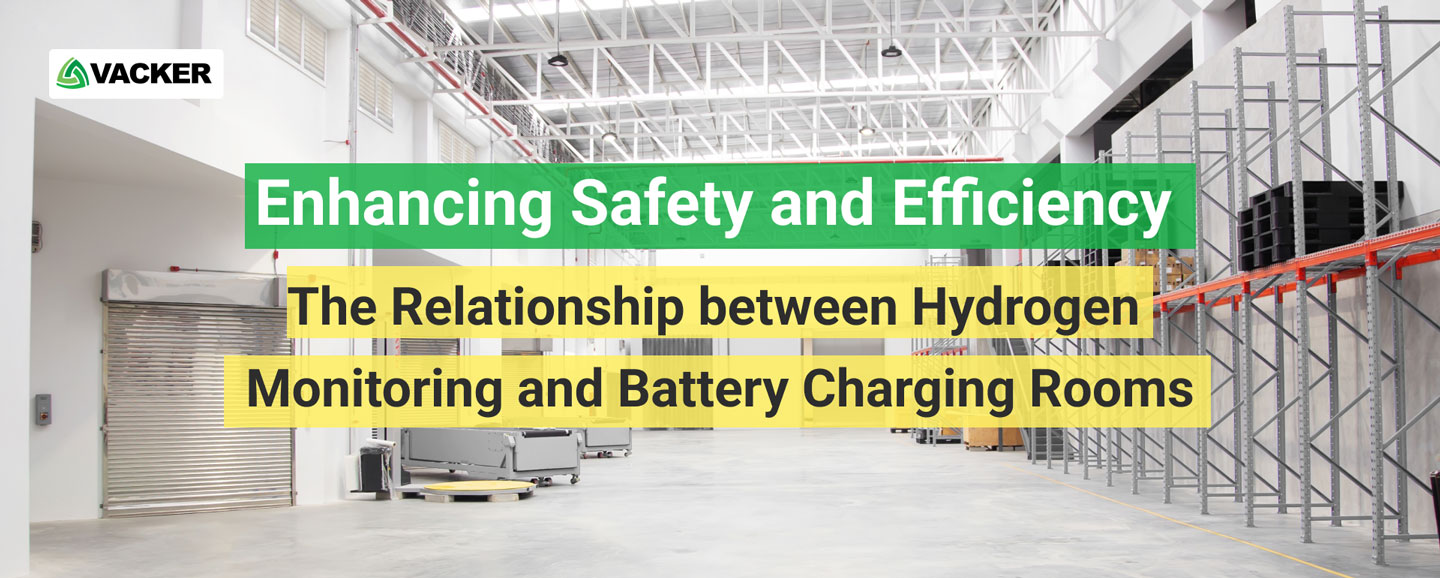
The world of energy storage is always changing, and battery technology is evolving really quickly to meet the growing need for sustainable and reliable power solutions. As more and more large-scale battery systems are being used, it is crucial to ensure that battery charging rooms are safe. One important aspect of safety in these environments is keeping a close watch on the gases present, especially hydrogen. In this blog post, we will explore the strong connection between gas monitoring, specifically hydrogen monitoring, and the safety of battery charging rooms.
Understanding the Risks:
Battery charging rooms have a wide range of energy storage systems, such as lithium-ion batteries, which are commonly used in electric cars, renewable energy setups, and backup power supplies. When batteries charge and discharge, they can produce hydrogen gas, which is highly flammable and potentially explosive. Hydrogen gas can pose a serious danger if it accumulates in small spaces, so it is extremely important to have reliable monitoring systems in place to mitigate the risks.
The Role of Hydrogen Monitoring:
Hydrogen monitoring plays a crucial role in monitoring the levels of hydrogen gas in battery charging rooms. It is a real-time process and serves several purposes: 
- Early Detection of Gas Leaks:
With hydrogen monitoring systems, you can detect gas leaks at an early stage. This allows you to address any potential issues before they escalate into major problems. It is of utmost importance because the last thing you want is for hydrogen to accumulate and cause an explosion.
- Risk Reduction:
These monitoring systems enable you to promptly respond to any increase in hydrogen levels. This means you can take immediate action to minimize risks. It may involve activating the ventilation system, halting the charging process, or adhering to other safety protocols.
- Compliance with Regulations:
Numerous regulations and standards dictate the use of gas monitoring systems to ensure the safety of individuals and prevent accidents. Following these regulations is not only a legal requirement but also the responsible thing to do in order to safeguard lives and property.
- Enhancing Battery Charging:
Hydrogen monitoring can even contribute to making the battery charging process more efficient. By understanding how gas is produced during charging, you can make adjustments to minimize the release of hydrogen and enhance overall safety. 
Integrating Gas Monitoring Systems:
Implementing an effective gas monitoring system entails the use of sophisticated sensors, alarms, and communication systems. These components work together to ensure the safety of battery charging rooms. Here are some key elements of a reliable gas monitoring system:
- Gas Sensors: It is essential to have sensors that can detect even the smallest amount of gas. These sensors should provide accurate and dependable measurements without delay.
- Alarm Systems: When the hydrogen levels reach a dangerous point, the alarm systems are triggered. They can emit audible alerts, display visual indicators, and send notifications to the responsible personnel.
- Ventilation Control: In some cases, the gas monitoring system can regulate the ventilation system. By adjusting the airflow, it helps maintain safe gas levels.
- Data Logging and Analysis: Keeping a record of data over time allows us to identify patterns, optimize performance, and generate valuable insights for improvement.
The connection between monitoring hydrogen and ensuring the safety of the battery charging room is extremely important when it comes to utilizing large energy storage systems. By giving safety the utmost importance and utilizing advanced monitoring technology, Vacker can ensure that energy storage is advantageous without jeopardizing the well-being of individuals or causing harm to the facilities.
With the continuous improvement of technology, it is imperative that we remain dedicated to safety in the ever-expanding realm of battery-powered advancements.
For more information, please feel free to reach out to us.
